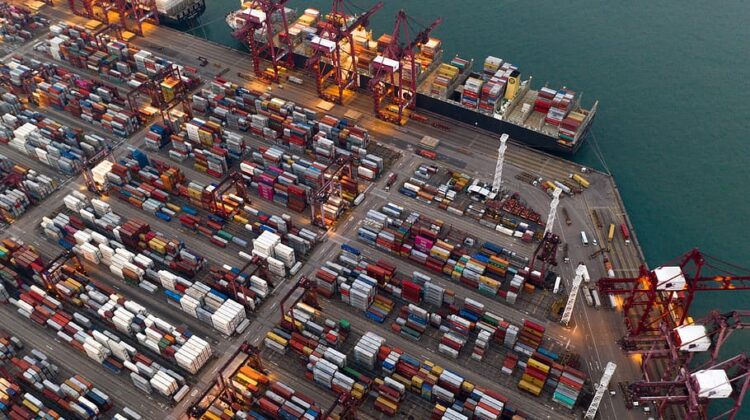
How Red Sea attacks put India’s trade at risk
NEW DELHI : The Gaza war has long posed the risk of escalating into a broader crisis for the Global Economy, and recent developments in the Red Sea are proving this concern to be valid. Yemen’s Houthi militants have been attacking commercial ships, purportedly in solidarity with Palestine, potentially jeopardizing global supply chains and driving up commodity prices, especially for fuel. It goes without saying that India is vulnerable to these cascading impacts.
The Red Sea, which starts from the Bab-el-Mandeb Strait and leads into the Suez Canal, offers the fastest sea route connecting Asia with Europe and the eastern coast of North America. Alternative routes that shipping companies are now taking are longer and costlier. Petroleum, basmati rice, automobile components, machinery, chemicals, plastics, readymade garments and footwear are among the items that trade bodies say are likely to be impacted among those most important to India. A delay in securing timely supplies and higher costs of transporting goods could stoke fresh inflationary pressures for the economy.
“India, heavily reliant on this route for trade and energy imports, faces increased costs and security risks, prompting efforts to diversify trade routes and enhance regional maritime security cooperation,” said Global Trade Research Initiative (GTRI), a think-tank, last month.
Around 10% of global crude oil and petroleum products pass through the Red Sea, and part of that is Russia’s shipments to India, which make up nearly one-third of India’s oil imports. However, last week, Ports, Shipping and Waterways Secretary T. K. Ramachandran claimed the crisis would have “no impact” on India’s trade with the rest of the world, PTI reported.
Soaring freight costs
With the militants stepping up attacks, freight costs have gone through the roof as vessels are being forced to reroute via the longer channel through the Cape of Good Hope on Africa’s southern tip. The longer voyages are leading to 7-15 days of additional sailing. Ocean freight rates on the route between Asia and north Europe have increased more than 150% compared to just before the diversion announcements to more than $4,000 per standard 40-foot shipping container, according to Freightos, a digital freight booking platform.
Similarly, ocean rates have more-than-doubled on the Asia–Mediterranean route, and Indian exporters are facing the heat. “Many Indian exporters are holding their consignment due to the tensions,” said Ajay Sahai, Director General & CEO of Federation of Indian Export Organizations. “The freight charge for a container being moved from Jawaharlal Nehru Port [near Mumbai] to Saudi Arabian ports was for around $750, and it has gone to around $1,500. For a European port it has gone from $2,000 to $4,000, in addition to levy of a contingency surcharge and peak season surcharge.”
Sahai said India engaged in about $225–250 billion worth of trade per year via the Red Sea route. This was about a fifth of India’s total trade in 2022-23.
India impact
With this, some of the biggest components in India’s trade basket are at risk, at a time of an already weak external environment. India’s exports have contracted for six of the eight months this fiscal year. The country depends on imports for close to 87% of its oil needs, leading to the risk of increased energy costs as it may have to use longer routes to secure its supplies. Similarly, chemicals, another of the likely-impacted commodities, are the second biggest component in India’s manufacturing exports list (20% share) and the third-biggest overall this fiscal year so far, shows latest trade data till November. In textile and ready-made garments, India has been one of the top five exporters globally, making up 7.6% of the country’s total exports this fiscal.
The upcoming trade data for December 2023, due later this month, will give a clearer indication of the impact.
